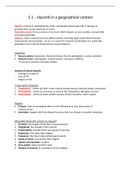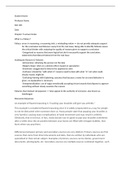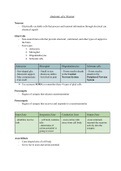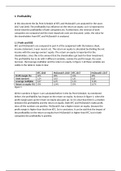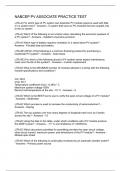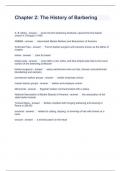• A close two-way emotional bond between two individuals.
• Each individual sees the other as essential for their own emotional security
• Takes a few months to develop in humans.
Attachment characteristics
• Proximity: people try to stay physically close to those with whom we are
attached.
• Separation distress: people are distressed when an attachment figure
leaves their presence.
• Secure-base behaviour: even when we are independent of our attachment
figures we tend to make regular contact with them e.g. when an infant
returns to attachment figure during play.
Caregiver-infant interactions
These are non-verbal forms of communication
that form the basis of attachment between an
infant and caregiver.
The more sensitive each is to the others'
signals, the deeper the relationship.
A baby can produce a social releaser, such as
smiling, to elicit a response from the caregiver
who can then respond to the baby's needs.
,Reciprocity
A description of how two people interact e.g. smiling.
Mother-infant interaction is reciprocal as the infant and mother respond to
each other's signals and each elicit a response from the other.
It becomes more frequent from the age of 3 months with close attention to
verbal signals and facial expressions.
Both mother and child can initiate interactions and they appear to take turns
doing so.
Brazelton suggested that this was an important pre-cursor to later
communications and Trevarthan suggested it was important for the development
of social and language skills.
Tronick used the still face experiment to show that babies would attempt to
draw the mother back into dialogue and become distressed when they were
unable to do so.
Tronick: still face experiment
AIM - To investigate the role of reciprocity between an infant and a caregiver.
METHOD
• Mother interacted with child normally but then did frozen expression for 2 mins.
• This interrupted the interactional turn-taking.
• After 2 mins, they returned to normal interaction.
• The baby’s response was measured throughout the investigation.
RESULTS
Infants showed distress at the mother's still face. Various actions were displayed by the
infant during the 2 mins, including:
• Smiling
• Hand movements (pointing or raising hands)
• Making high pitched noises
• Eventually crying.
CONCLUSION - Reciprocity is an important form of caregiver-infant interaction.
, Interactional synchrony
When a mother and infant reflect both the actions and emotions of the other and do
this in a coordinated (synchronised) way.
Meltzoff and Moore observed the beginnings of interactional synchrony in infants as young
as 2 weeks.
• The adult displayed one of three facial expressions or a hand gesture.
• The babies were filmed and observers had to guess which behaviour the adult was
doing based on the babies movements.
Isabella: secure attachments shown more instances of interactional synchrony in the first
year of life = strong emotional attachments are associated with high levels of synchrony.
Heimann: infants who demonstrate a lot of imitation from birth have been found to have a
better quality of relationship at 3 months.
However, it isn't clear whether the imitation is a cause or an effect of this early synchrony.


